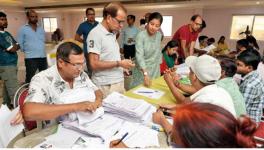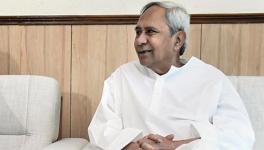Politics Behind Denial of ST Status to 6 Assam OBCs
Representational us eonly.Image Courtesy: maxpixel.com
Kolkata: Politics has played a major role in thwarting attempts by Assam’s six Other Backward Classes (OBC) to get recognised as Scheduled Tribes (ST).
It has been nine years since the Assam government recommended to then-Prime Minister Manmohan Singh on December 9, 2013, to include Moran, Muttock, Tai Ahom, Koch Rajbanshi, Sootea and Tea Tribes in the ST category following the demand of the Assam Tea Tribes Students Association (ATTSA).
In early March 2016, a committee headed by then-special secretary (internal security) in the Union home ministry Mahesh Singla was set up to examine the ATTSA demand and it submitted its recommendation by May 31.
In 2017, then-minister of state for home affairs and current law minister Kiren Rijiju had said that the process would be “completed” in three months.
“We are committed to granting ST status to six OBC communities in Assam. The Central government has already set up a committee to examine the proposal and it is working on it,” Rijiju had said at a tripartite meeting with representatives of the six communities and the Assam government held in New Delhi in April 2017, according to a PTI report.
According to the PTI report, “Grant of tribal status to these six communities will lead to 50% population of Assam becoming tribal or Assam turning into a tribal-dominated state."
People who have closely followed the developments allege that vested interests, including the state government, are behind the non-fulfilment of the demand.
There are already nine STs in the state: Mising, Bodo, Karbi, Kuki, Dimasa, Deori, Tiwa, Sonowal Kachari and Rava. The addition of the six OBCs to the list will mean sharing of the benefits and privileges the STs are entitled to under Article 46 of the Constitution. General category people oppose the demand as well because the number of seats in the Assembly and Parliament will decrease with the increase in the number of reserved category seats.
“When such demands are raised by organised outfits, such as ATTSA, the state government finds itself in a politically delicate situation. Outright rejection becomes difficult as it’s a question of vote bank,” says Atmaram Kumar, associate professor of English at Moran College, Charaideo district, and former adviser to AATSA.
“With a population of 80 lakh, they [the OBCs] are a major part of the electorate. As they are among the marginalised sections, the state government cannot ignore them but their demand is an issue with the existing STs,” Kumar added.
ATTSA president Dhiraj Gowala said, “We are being deprived of recognition but a large majority of our people in Odisha, Jharkhand, Chhattisgarh, Madhya Pradesh, Bihar and West Bengal are enjoying the ST status” adding that the Assembly had “passed a resolution favouring the ST tag for the six communities, who account of one-third of Assam’s population, in 2005”.
These nine years since the demand was first raised, according to Sushil Suri, associate professor of history at Sonari College, Charaideo, “shows the lack of interest of both the Assam government and New Delhi though their election manifestos promised to fulfil the demand”.
“But politicians know that if the OBCs are recognised as STs, they will become strong numerically and their bargaining power will increase,” Suri added.
Rameswar Kurmi, assistant prof of history at Khagarijan College, Nagaon, whose doctoral thesis ‘Identity Formation of Indentured Labour in Tea Plantation of Assam: A historical study (1859-1950)’ was awarded in 2019, stated: “The tea garden labourers that came as indentured emigrants became victims of colonial politics, which made them socially and politically dormant in the entire colonial period. Keeping aside their original identity, they were termed ‘coolie’ and after their contract expired, they were called ex-tea garden coolies. The tea plantation and the political economy of the state deconstructed their life and culture and created a situation for fluctuating identity."
Kurmi said that “but their awareness increased after Independence as trade unions were formed and the demand for ST status gained traction. The sad part is that a political game is being played by every ministry to lure them”.
The criteria for specification of a community as ST are indications of primitive traits, distinctive culture, geographical isolations, shyness of contact with the community at large and backwardness.
Criticising the criteria, Kurmi said, “How people who have spent years in tea plantations be expected to retain their primitive traits and distinctive culture that marked their ancestors in other states wherefrom they were brought by Britishers to work in tea gardens? Reality warrants some relaxation in the criteria; after all, they are descendants of those having ST recognition.”
As these criteria were not spelt out in the Constitution, the Centre on June 15, 1999, approved modalities for deciding claims. These were amended on June 25, 2002. The modalities and processes became strict, stipulated association of experts in anthropology, ethnography and other social sciences and provided for public hearings if found necessary.
The process became more time-consuming, which partly explains the delay in fulfilling the demand. The authority of the National Commission for Scheduled Tribes and the Registrar General of India was made more comprehensive and absolute.
The Union Cabinet’s approval on September 14 of the inclusion of 15 tribal groups in Himachal, Chhattisgarh, Karnataka, Tamil Nadu and Uttar Pradesh in the ST category has prompted several other states for similar affirmative action.
In a letter addressed to tribal affairs minister Arjun Munda on September 17, Odisha chief minister Naveen Patnaik wrote: “Since 1978 onwards, the Odisha government has recommended more than 160 communities ... for inclusion in the ST list with the approval of the Tribes Advisory Council. Among these, some are new entries. Some others are subsets, synonyms and phonetic variations of the existing communities ... who are being deprived of the benefits availed by the STs though they have the same tribal characteristics as their respective notified STs.”
Patnaik further wrote: “A task force under the ministry of tribal affairs had recommended nine proposals from Odisha as priority cases ... in 2014, but they are yet to be notified in the Presidential order. Because of the delay ... all these 160-plus communities are becoming victims of historical injustice.”
Similar long-pending demands are causing discontent in other parts of the eastern India. Kurmis demanding ST status and the inclusion of Kurmali language in the Eighth Schedule of the Constitution blocked rail tracks in Kharagpur, West Bengal, the third week of September, resulting in cancellation and diversion of several trains, and blocked a national highway in Purulia.
The Gorkhas in Darjeeling are angry as well. The ST tag has been eluding the 11 hill communities of Bhujel, Gurung, Mangar, Newar, Jogi, Khas, Rai, Sunuwar, Thami, Yakk (Dewan) and Dhimal. Hill politicians are on record claiming that the 11 communities were considered STs in the 1941 Census but subsequently delisted for unexplained reasons. Bharatiya Janata Party’s (BJP) Kurseong MLA BP Sharma has alleged deficiencies in West Bengal’s proposal sent to the Centre for re-categorising the communities as STs.
According to the 2011 Census, at 10.4 crore, STs accounted for 8.6% of the population. There are 705 notified STs, which will rise to 720 following the September approval.
The writer is a Kolkata-based senior freelance journalist. Views are personal.
Get the latest reports & analysis with people's perspective on Protests, movements & deep analytical videos, discussions of the current affairs in your Telegram app. Subscribe to NewsClick's Telegram channel & get Real-Time updates on stories, as they get published on our website.
























